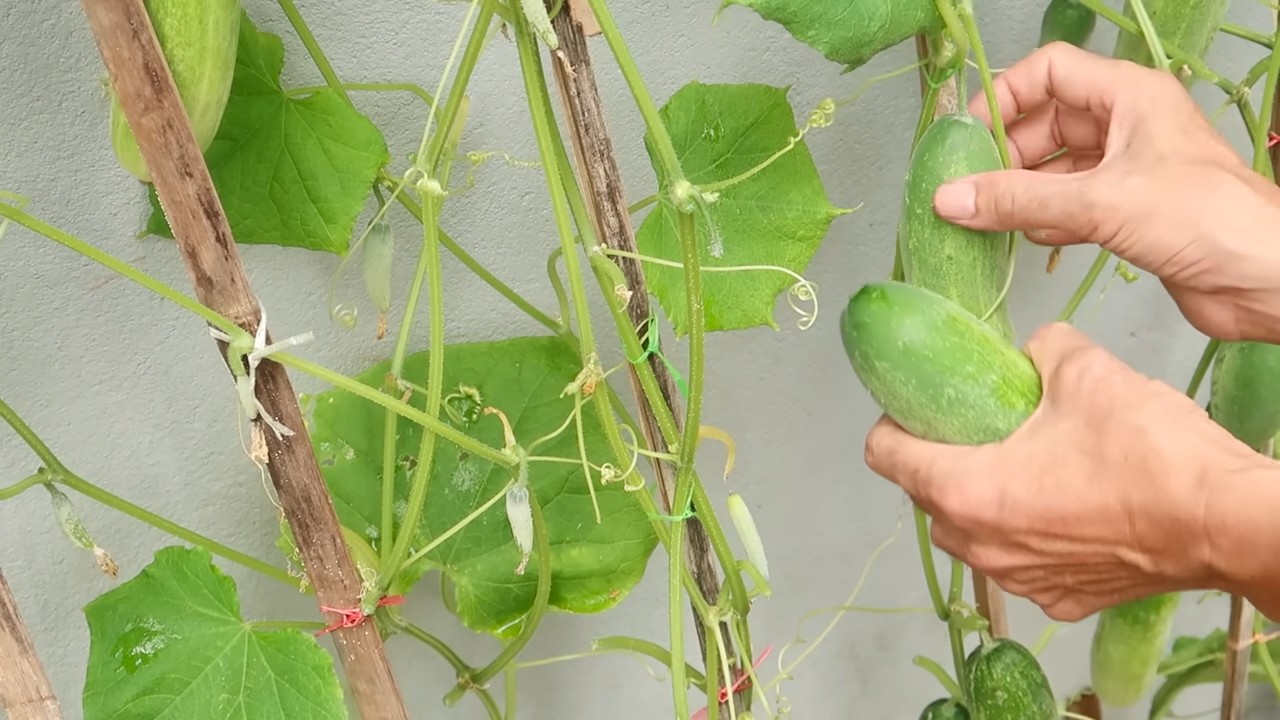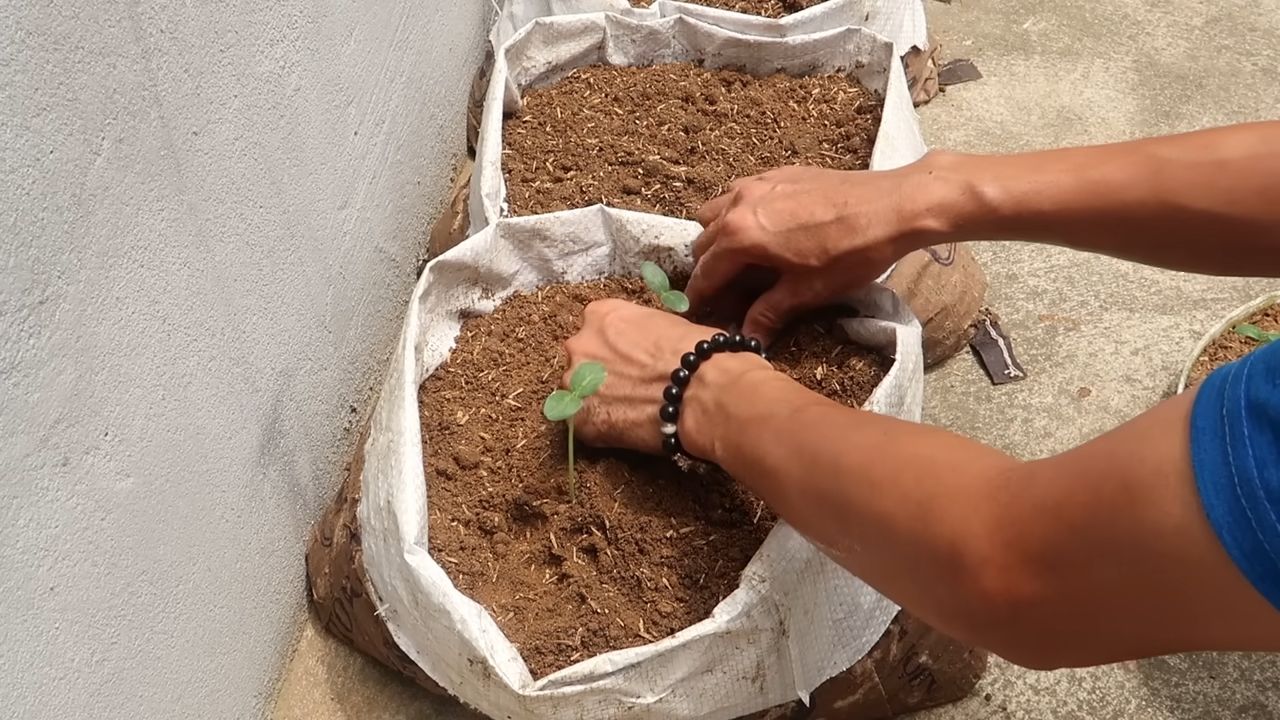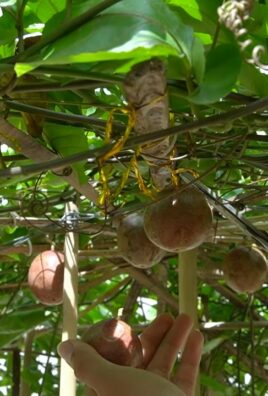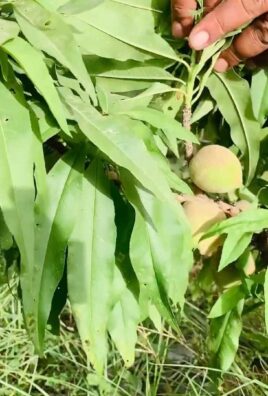Grow Cucumbers Indoors Easily, even if you don’t have a sprawling backyard! Imagine biting into a crisp, refreshing cucumber you nurtured from seed, right in your own home. Sounds idyllic, doesn’t it? For centuries, cultivating food indoors has been a necessity and a cherished tradition, from ancient Roman greenhouses to modern-day urban farms. But you don’t need to be a seasoned horticulturalist to enjoy the fruits (or vegetables!) of your labor.
Let’s face it, not everyone has access to ample outdoor space or the perfect climate for growing cucumbers. That’s where this DIY guide comes in! I’m going to share some simple, yet effective tricks and hacks that will empower you to grow cucumbers indoors easily, regardless of your experience level. We’ll cover everything from selecting the right varieties and providing optimal lighting to mastering pollination techniques and troubleshooting common issues.
Why should you bother with growing cucumbers indoors? Beyond the sheer satisfaction of harvesting your own produce, it’s a fantastic way to enjoy fresh, organic cucumbers year-round, reduce your carbon footprint, and add a touch of green to your living space. Plus, it’s a rewarding and educational activity for the whole family. So, grab your gardening gloves, and let’s get started on this exciting indoor cucumber-growing adventure!

Growing Cucumbers Indoors: A Beginner’s Guide
Hey there, fellow plant enthusiasts! Ever dreamt of enjoying fresh, crisp cucumbers straight from your own home, even when the weather outside is frightful? Well, dream no more! Growing cucumbers indoors is totally achievable, and I’m here to guide you through the process, step-by-step. It might seem a little daunting at first, but trust me, with a little patience and the right setup, you’ll be munching on homegrown cucumbers in no time.
Choosing the Right Cucumber Variety
Not all cucumbers are created equal, especially when it comes to indoor growing. You’ll want to opt for bush or compact varieties that don’t require extensive vining. These are much more manageable in a limited space. Here are a few of my favorites:
* Spacemaster: This is a classic choice for containers. It produces delicious, dark green cucumbers on a compact vine.
* Bush Champion: As the name suggests, this variety is bushy and productive, yielding plenty of cucumbers.
* Patio Snacker: Perfect for small spaces, this variety produces small, snack-sized cucumbers.
* Little Leaf: This variety is known for its smaller leaves, which means it needs less light than other cucumber varieties.
Setting Up Your Indoor Cucumber Garden
Before you even think about planting, you need to create the right environment for your cucumbers to thrive. This involves choosing the right container, soil, and lighting.
* Container Selection: Cucumbers need plenty of room for their roots to grow. I recommend using a container that’s at least 12 inches in diameter and 12 inches deep. Make sure it has drainage holes to prevent waterlogging. Fabric pots are also a great option as they allow for better aeration.
* Soil Preparation: Cucumbers are heavy feeders, so you’ll need a rich, well-draining potting mix. I like to use a mix of compost, peat moss, and perlite. You can also add some slow-release fertilizer to give your plants a boost. Avoid using garden soil, as it can compact and doesn’t drain well in containers.
* Lighting: Cucumbers need at least 6-8 hours of sunlight per day. If you don’t have a sunny window, you’ll need to supplement with grow lights. LED grow lights are energy-efficient and provide the full spectrum of light that plants need. Position the lights about 6-12 inches above the plants.
* Temperature and Humidity: Cucumbers prefer temperatures between 70-80°F (21-27°C) during the day and 60-70°F (15-21°C) at night. They also like high humidity. You can increase humidity by misting your plants regularly, placing a tray of water near them, or using a humidifier.
Planting Your Cucumber Seeds
Now for the fun part! Let’s get those seeds in the soil.
1. Soaking the Seeds: I like to soak my cucumber seeds in water for 24 hours before planting. This helps to soften the seed coat and speeds up germination.
2. Planting the Seeds: Fill your container with the prepared potting mix, leaving about an inch of space at the top. Make a small hole about 1 inch deep and place 2-3 seeds in each hole. Cover the seeds with soil and gently water.
3. Germination: Keep the soil moist but not soggy. Cucumber seeds typically germinate in 5-10 days. Once the seedlings emerge, thin them out, leaving only the strongest one in each container.
Caring for Your Indoor Cucumber Plants
Once your cucumber plants are established, it’s important to provide them with the right care to ensure they thrive and produce plenty of delicious cucumbers.
1. Watering: Cucumbers need consistent moisture, especially when they’re fruiting. Water deeply whenever the top inch of soil feels dry to the touch. Avoid overwatering, as this can lead to root rot.
2. Fertilizing: As I mentioned earlier, cucumbers are heavy feeders. Fertilize them every 2-3 weeks with a balanced liquid fertilizer. Look for a fertilizer with an N-P-K ratio of 10-10-10 or similar.
3. Pollination: This is where things get a little tricky. Most cucumber varieties require pollination to produce fruit. Since you don’t have bees buzzing around indoors, you’ll need to hand-pollinate your plants.
* Identifying Male and Female Flowers: Cucumber plants produce both male and female flowers. Male flowers have a long, thin stem, while female flowers have a small cucumber-like structure behind the flower.
* Hand-Pollination: Use a small paintbrush or cotton swab to collect pollen from the male flowers. Gently transfer the pollen to the stigma of the female flowers. I usually do this in the morning when the flowers are open.
* Parthenocarpic Varieties: If you want to avoid hand-pollination altogether, you can choose parthenocarpic cucumber varieties. These varieties produce fruit without pollination.
4. Pruning: Pruning can help to improve air circulation and encourage fruit production. Remove any yellowing or dead leaves. You can also prune the side shoots to encourage the plant to focus its energy on producing fruit.
5. Support: Even bush varieties can benefit from some support. You can use a small trellis or stakes to help keep the plants upright and prevent the cucumbers from touching the soil.
6. Pest and Disease Control: Keep an eye out for common pests like aphids, spider mites, and whiteflies. You can control these pests with insecticidal soap or neem oil. Prevent fungal diseases by providing good air circulation and avoiding overwatering.
Harvesting Your Cucumbers
The moment you’ve been waiting for! Harvesting your homegrown cucumbers.
1. When to Harvest: Cucumbers are typically ready to harvest about 50-70 days after planting. The exact timing will depend on the variety. Harvest them when they’re the desired size and color.
2. How to Harvest: Use a sharp knife or scissors to cut the cucumbers from the vine. Be careful not to damage the plant.
3. Enjoying Your Harvest: Freshly harvested cucumbers are best enjoyed right away. You can eat them raw, add them to salads, or use them to make pickles.
Troubleshooting Common Problems
Even with the best care, you might encounter some problems along the way. Here are a few common issues and how to address them:
* Yellowing Leaves: This can be caused by overwatering, underwatering, nutrient deficiencies, or pests. Check the soil moisture and adjust your watering accordingly. Fertilize your plants regularly and inspect them for pests.
* Lack of Fruit: This is often due to poor pollination. Make sure you’re hand-pollinating your plants or growing a parthenocarpic variety.
* Small or Misshapen Cucumbers: This can be caused by nutrient deficiencies or inconsistent watering. Fertilize your plants regularly and water them deeply whenever the top inch of soil feels dry.
* Powdery Mildew: This is a fungal disease that can cause a white, powdery coating on the leaves. Improve air circulation and treat the plants with a fungicide.
Extra Tips for Success
Here are a few extra tips to help you succeed with your indoor cucumber garden:
* Rotate Your Plants: Rotate your plants regularly to ensure they get even light exposure.
* Clean Your Tools: Clean your pruning shears and other tools with rubbing alcohol to prevent the spread of disease.
* Keep a Journal: Keep a journal to track your progress and learn from your mistakes.
* Don’t Give Up! Growing cucumbers indoors can be challenging, but it’s also incredibly rewarding. Don’t be discouraged if you encounter some setbacks. Just keep learning and experimenting, and you’ll eventually find what works best for you.
Growing cucumbers indoors is a fantastic way to enjoy fresh, homegrown produce year-round. With a little planning and effort, you can create a thriving indoor garden that provides you with a steady supply of delicious cucumbers. Happy gardening!

Conclusion
So, there you have it! Growing cucumbers indoors easily is not just a pipe dream; it’s an achievable reality with a little planning and the right approach. We’ve walked you through the essential steps, from selecting the perfect cucumber variety to providing optimal lighting and support. The beauty of this DIY project lies in its accessibility and the sheer joy of nurturing life from seed to harvest, all within the comfort of your own home.
Why is this a must-try? Beyond the obvious benefit of fresh, homegrown cucumbers, this indoor gardening adventure offers a unique connection to nature, especially during seasons when outdoor gardening is limited. Imagine the satisfaction of biting into a crisp, juicy cucumber you cultivated yourself, knowing exactly where it came from and how it was grown. Plus, it’s a fantastic way to add a touch of green to your living space and purify the air.
But the fun doesn’t stop there! Feel free to experiment with different cucumber varieties. Bush cucumbers are particularly well-suited for indoor growing due to their compact size. You could also try pickling cucumbers for a continuous supply of homemade pickles. Consider adding companion plants like basil or marigolds to your indoor garden to deter pests and enhance the flavor of your cucumbers. Another variation is to explore hydroponic systems for an even more efficient and space-saving approach to indoor cucumber cultivation. This method eliminates the need for soil and delivers nutrients directly to the roots, potentially leading to faster growth and higher yields.
Don’t be afraid to get creative with your support systems. While trellises are a popular choice, you can also use stakes, netting, or even repurposed materials like old ladders or branches to provide vertical support for your cucumber vines. The key is to ensure that your cucumbers have something to climb on as they grow, preventing them from sprawling on the floor and becoming susceptible to pests and diseases.
We understand that embarking on a new gardening project can be daunting, but we encourage you to take the plunge and experience the rewards of growing cucumbers indoors easily. It’s a learning process, and there will undoubtedly be challenges along the way, but the satisfaction of harvesting your own cucumbers will make it all worthwhile.
We’re eager to hear about your experiences! Share your tips, tricks, and triumphs in the comments below. Let us know what cucumber varieties you’re growing, what challenges you’ve faced, and what solutions you’ve discovered. Your insights could help other aspiring indoor gardeners succeed in their own cucumber-growing endeavors. Together, we can create a thriving community of indoor gardeners and enjoy the bounty of fresh, homegrown cucumbers all year round. So, grab your seeds, potting mix, and grow lights, and let’s get growing!
Frequently Asked Questions (FAQ)
What are the best cucumber varieties to grow indoors?
Choosing the right cucumber variety is crucial for indoor success. Bush or compact varieties are generally preferred because they require less space and are easier to manage. Some excellent choices include:
* Spacemaster: A compact bush variety that produces abundant yields of dark green cucumbers.
* Bush Champion: Another popular bush variety known for its disease resistance and early maturity.
* Patio Snacker: A small, prolific variety perfect for containers and small spaces.
* Little Leaf: As the name suggests, this variety has smaller leaves, allowing for better light penetration and air circulation.
* Diva: A burpless, parthenocarpic variety (meaning it doesn’t require pollination) that produces smooth, thin-skinned cucumbers.
When selecting a variety, consider factors such as size, disease resistance, and whether it requires pollination. Parthenocarpic varieties are particularly well-suited for indoor growing because they don’t need bees or hand-pollination to produce fruit.
How much light do indoor cucumbers need?
Cucumbers are sun-loving plants and require at least 6-8 hours of direct sunlight per day. If you don’t have a sunny window, you’ll need to supplement with artificial grow lights. LED grow lights are a popular choice because they are energy-efficient and provide the full spectrum of light that cucumbers need to thrive.
When using grow lights, position them about 6-12 inches above the plants and adjust the height as the cucumbers grow. You can also use a timer to ensure that your cucumbers receive the appropriate amount of light each day. A combination of natural and artificial light is often the best approach, especially during the winter months when sunlight is limited.
How often should I water my indoor cucumbers?
Cucumbers need consistent moisture to thrive, but overwatering can lead to root rot. Water your cucumbers deeply whenever the top inch of soil feels dry to the touch. Ensure that your containers have drainage holes to prevent water from accumulating at the bottom.
The frequency of watering will depend on factors such as the size of your container, the type of potting mix you’re using, and the temperature and humidity of your environment. Check the soil moisture regularly and adjust your watering schedule accordingly. During hot, dry periods, you may need to water your cucumbers more frequently.
Do I need to pollinate my indoor cucumbers?
Some cucumber varieties require pollination to produce fruit, while others are parthenocarpic and don’t need pollination. If you’re growing a variety that requires pollination, you’ll need to hand-pollinate the flowers yourself.
To hand-pollinate, use a small paintbrush or cotton swab to transfer pollen from the male flowers to the female flowers. Male flowers have a long, slender stem, while female flowers have a small cucumber-like structure at the base. Gently brush the pollen onto the stigma of the female flower.
You can also encourage pollination by placing your cucumber plants near an open window or using a small fan to circulate air.
What kind of support system do cucumbers need?
Cucumbers are vining plants and need a support system to climb on. Trellises, stakes, and netting are all popular options. Choose a support system that is sturdy enough to support the weight of the mature cucumber vines and fruit.
Install the support system when you plant your cucumbers to avoid disturbing the roots later on. Train the vines to climb the support system by gently guiding them and tying them with soft twine or plant clips.
How do I deal with pests and diseases on my indoor cucumbers?
Indoor cucumbers are less susceptible to pests and diseases than outdoor cucumbers, but they can still be affected. Common pests include aphids, spider mites, and whiteflies. Common diseases include powdery mildew and fungal infections.
To prevent pests and diseases, keep your growing area clean and well-ventilated. Inspect your plants regularly for signs of infestation or disease. If you find pests, you can try washing them off with a strong stream of water or using insecticidal soap or neem oil. For diseases, remove affected leaves and treat the plants with a fungicide.
How long does it take to grow cucumbers indoors?
The time it takes to grow cucumbers indoors depends on the variety, growing conditions, and your level of experience. Generally, you can expect to harvest your first cucumbers about 50-70 days after planting the seeds.
To speed up the process, start your seeds indoors a few weeks before the last expected frost. Provide your cucumbers with plenty of light, water, and nutrients. Monitor your plants closely and address any problems promptly.
What kind of fertilizer should I use for indoor cucumbers?
Cucumbers are heavy feeders and need a balanced fertilizer to thrive. Use a fertilizer that is high in nitrogen, phosphorus, and potassium (NPK). You can also supplement with micronutrients such as calcium, magnesium, and iron.
Fertilize your cucumbers every 2-3 weeks, following the instructions on the fertilizer label. Avoid over-fertilizing, as this can lead to nutrient burn.
Can I grow cucumbers indoors year-round?
Yes, you can grow cucumbers indoors year-round, provided you have the right growing conditions. You’ll need to provide your cucumbers with adequate light, water, and nutrients, and maintain a consistent temperature and humidity level.
During the winter months, you may need to supplement with artificial grow lights to ensure that your cucumbers receive enough light. You may also need to adjust your watering schedule and fertilizer regime to account for the changes in temperature and humidity.




Leave a Comment